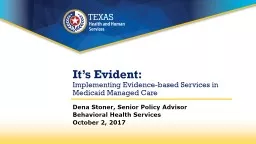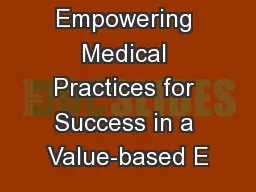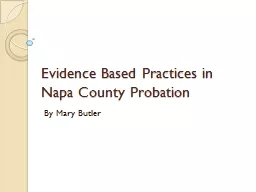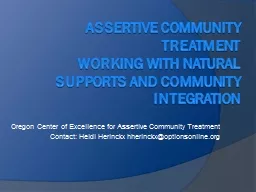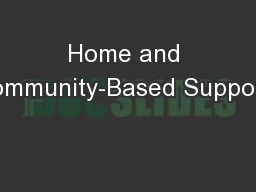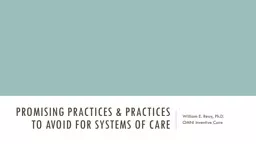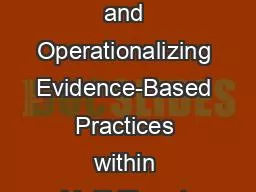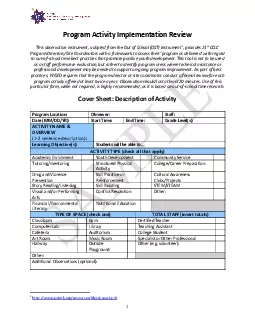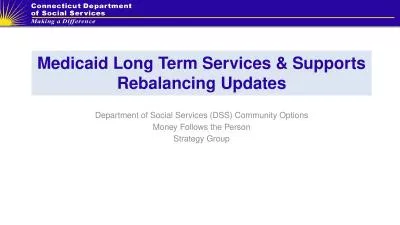PPT-It’s Evident : How Integration Supports Adopting Evidence-based Practices
Author : myesha-ticknor | Published Date : 2018-10-23
Dena Stoner Senior Policy Advisor Behavioral Health Services Section NAMD Fall Meeting November 7 2017 Systems Integration 2 Behavioral Health Funding in Texas
Presentation Embed Code
Download Presentation
Download Presentation The PPT/PDF document "It’s Evident : How Integration Suppor..." is the property of its rightful owner. Permission is granted to download and print the materials on this website for personal, non-commercial use only, and to display it on your personal computer provided you do not modify the materials and that you retain all copyright notices contained in the materials. By downloading content from our website, you accept the terms of this agreement.
It’s Evident : How Integration Supports Adopting Evidence-based Practices: Transcript
Download Rules Of Document
"It’s Evident : How Integration Supports Adopting Evidence-based Practices"The content belongs to its owner. You may download and print it for personal use, without modification, and keep all copyright notices. By downloading, you agree to these terms.
Related Documents

